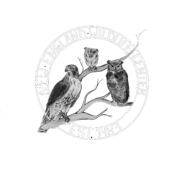As Halloween approaches, and decorations start appearing, bats of all kinds begin to be prominently displayed as part of the spooky scenes. Bats first became representative of Halloween when it was noticed that some bats were feeding on the blood of cattle in the fields. That along with their nocturnal behavior, and the belief that witches worshipped horned figures with wings set them up as the ultimate Halloween fright. It’s unfortunate that they got portrayed like this. Bats are critical to the health of our ecosystem. Massachusetts has nine species of bats that live or migrate here, the Vampire Bat that was discovered sucking the blood of cattle, is not one of them.
Across America, DDT and other pesticides drastically affected bats from the 1940’s until the ban of DDT in 1972. Numbers and colonies diminished and disappeared. It was hopeful that with the ban, numbers would increase. In 2006 White-nose Syndrome was discovered. This fungus spread rapidly throughout much of the United States. Any bat species that hibernated in caves had their numbers crash again. The four bat species that live in caves in Massachusetts ( little brown bat, northern long-eared bat, eastern small footed bat and tricolored bat) were then listed as Endangered Species. The little brown bat, the most abundant bat in Massachusetts had a population decline of 99%. An estimated 6.7 million bats have died since 2016 due to White-nose syndrome.
Bats have short, soft brown to black fur and darker wings. Unlike other mammals, they can truly fly. Their wings have a bone structure similar to human hands. Three bat species (silver haired bat, eastern red bat, and hoary bat) roost in trees or crevices in summer months and then migrate to warmer weather for the winter. Five species (little brown bat, northern long eared bat, Indiana bat, eastern small-footed bat, and tri-colored bat) roost in forested areas in summer and hibernate in caves in winter. The big brown bat is the only one that roosts all year in trees or buildings in summer or buildings and caves in winter.
Bats eat insects, lots and lots of insects. They can eat thousands of insects a night. They are active at night and dawn and dusk. They locate prey by using a natural sonar called echolocation. They help reduce the mosquito population among other nuisance pests. Having them in your yard is a bonus for many reasons, but they also have some issues you need to be aware of. Bats can carry rabies, but on Cape Cod it is not common. Despite that, rabies is deadly to humans, so any bite or possible bite must be taken seriously. If the bat can be located it is sent to the state lab for rabies testing. Any person with a potential exposure should call their doctor immediately. They may recommend you begin a series of preventative rabies vaccines. It is always best to call a professional or animal control, but if you must handle a bat, always use thick gloves and a mask.
Bats can get into very small spaces and into homes. To avoid this, it is best to fill in any cracks in your attic or foundation. Installing a bat house is one of the best ways you can keep bats out of your house and into a protective roost. This will also provide them with a safe , warm place to raise their young.
In Winter in Massachusetts, bats go into a type of hibernation called torpor, or they migrate to warmer climates. The big brown bat is the only one that commonly inhabits buildings during this time. This is primarily due to loss of habitat. It is the bat we mostly see at the Cape Wildlife Center , usually because their torpor has been disturbed. This happens when their chosen sleeping place has been uncovered. We allow these bats to remain in torpor with us until the insects start coming back in the spring, and then they are released to do their job.
Bats in Massachusetts are protected under law and may not be killed or captured except with a special permit when they are creating a risk to public health.
To learn more about the Cape Wildlife Center or help in their mission, visit www.capewildlifecenter.com or call 508 362-0111. The Cape Wildlife Center has some handcrafted bat houses for sale. If interested please call.
Caryn Ritchie is the volunteer coordinator for the Cape Wildlife Center and holds both a Massachusetts State Wildlife Rehabilitator license and a Federal permit for migratory bird rehabilitation.

Recent Comments